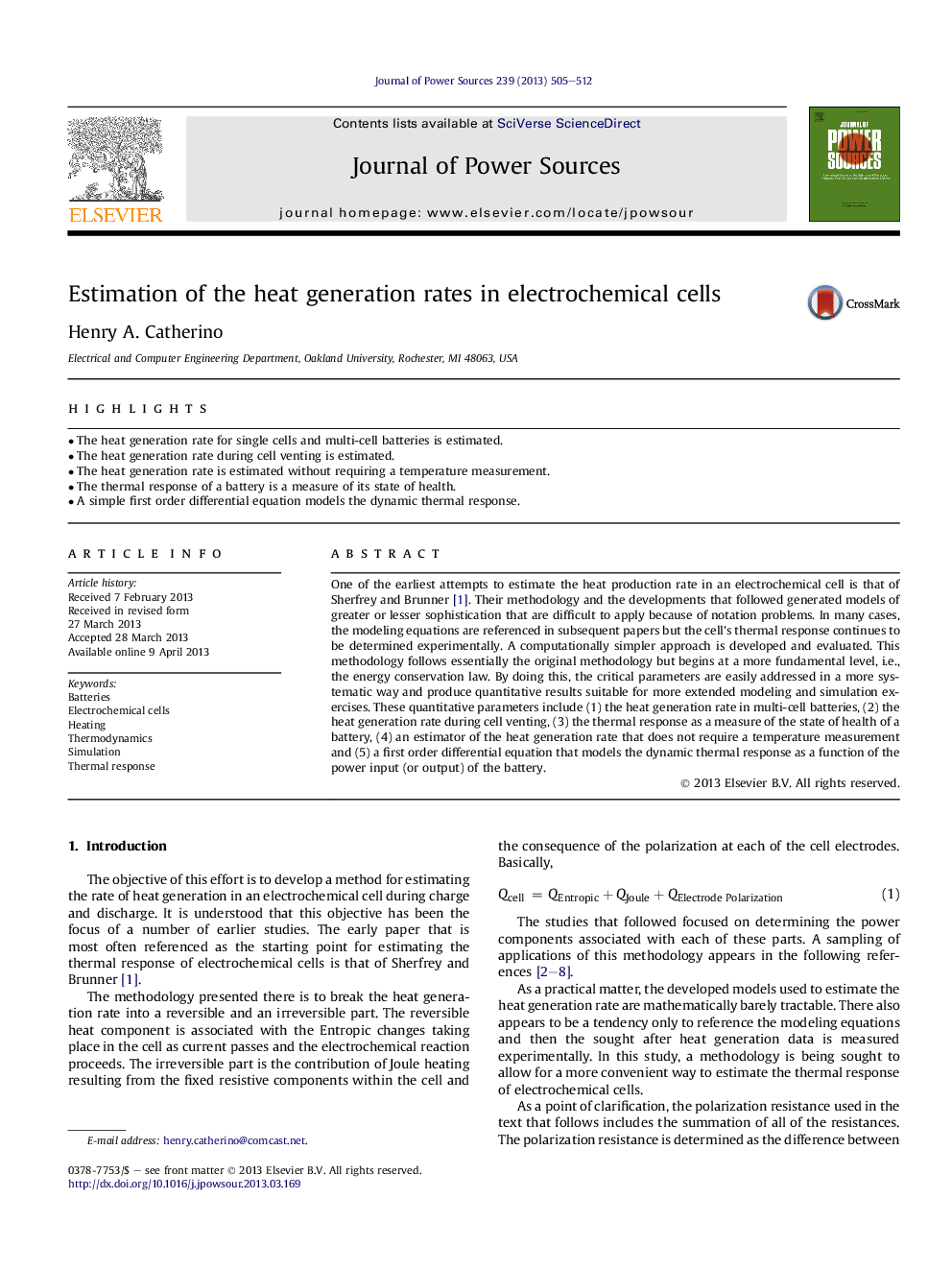| Article ID | Journal | Published Year | Pages | File Type |
|---|---|---|---|---|
| 7740701 | Journal of Power Sources | 2013 | 8 Pages |
Abstract
One of the earliest attempts to estimate the heat production rate in an electrochemical cell is that of Sherfrey and Brunner [1]. Their methodology and the developments that followed generated models of greater or lesser sophistication that are difficult to apply because of notation problems. In many cases, the modeling equations are referenced in subsequent papers but the cell's thermal response continues to be determined experimentally. A computationally simpler approach is developed and evaluated. This methodology follows essentially the original methodology but begins at a more fundamental level, i.e., the energy conservation law. By doing this, the critical parameters are easily addressed in a more systematic way and produce quantitative results suitable for more extended modeling and simulation exercises. These quantitative parameters include (1) the heat generation rate in multi-cell batteries, (2) the heat generation rate during cell venting, (3) the thermal response as a measure of the state of health of a battery, (4) an estimator of the heat generation rate that does not require a temperature measurement and (5) a first order differential equation that models the dynamic thermal response as a function of the power input (or output) of the battery.
Related Topics
Physical Sciences and Engineering
Chemistry
Electrochemistry
Authors
Henry A. Catherino,
